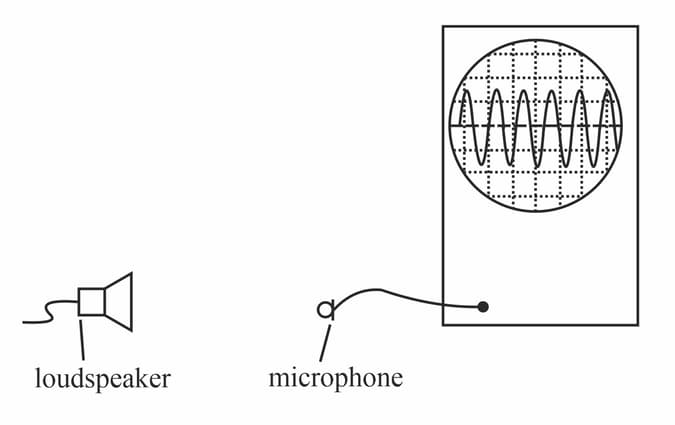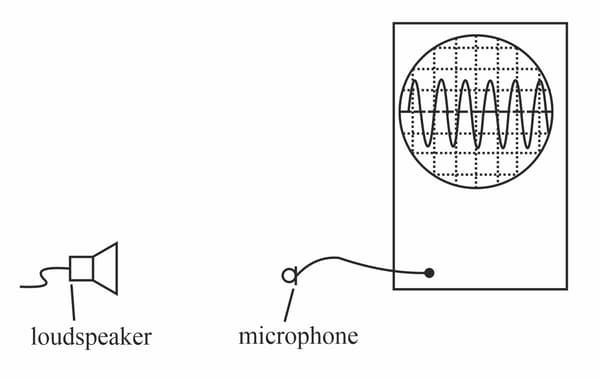This diagram shows some air particles as a sound wave passes.

(b) Describe how the particle labelled P moves as the wave passes.


Important Questions on Waves
This diagram shows some air particles as a sound wave passes.

(c) The sound wave has a frequency of . Explain, in terms of the movement of an individual particle, what this means.
This diagram shows some air particles as a sound wave passes.

(d) The wave speed of the sound is . Calculate the wavelength of the wave.
In an experiment, a student is determining the speed of sound using the equation . The values of frequency and wavelength are shown below:
Determine the speed including the absolute uncertainty.
This diagram shows a loudspeaker producing a sound and a microphone connected to a cathode-ray oscilloscope (CRO).

(a) Sound is described as a longitudinal wave. Describe sound waves in terms of the movements of the air particles.
This diagram shows a loudspeaker producing a sound and a microphone connected to a cathode-ray oscilloscope (CRO).

(b) The time-base on the oscilloscope is set at . Calculate the frequency of the CRO trace.
This diagram shows a loudspeaker producing a sound and a microphone connected to a cathode-ray oscilloscope (CRO).

(c) The wavelength of the sound is found to be . Calculate the speed of sound.
The Doppler effect can be used to measure the speed of blood. Ultrasound, which is sound of high frequency, is passed from a transmitter into the body, where it reflects off particles in the blood. The shift in frequency is measured by a stationary detector, placed outside the body and close to the transmitter. In one patient, particles in the blood are moving at a speed of in a direction directly away from the transmitter. The speed of ultrasound in the body is .
This situation is partly modelled by considering the particles to be emitting sound of frequency as they move away from the detector. This sound passes to the detector outside the body and the frequency measured by the detector is not .
State whether the frequency received by the stationary detector is higher or lower than the frequency emitted by the moving particles.
The Doppler effect can be used to measure the speed of blood. Ultrasound, which is sound of high frequency, is passed from a transmitter into the body, where it reflects off particles in the blood. The shift in frequency is measured by a stationary detector, placed outside the body and close to the transmitter. In one patient, particles in the blood are moving at a speed of in a direction directly away from the transmitter. The speed of ultrasound in the body is .
This situation is partly modelled by considering the particles to be emitting sound of frequency as they move away from the detector. This sound passes to the detector outside the body and the frequency measured by the detector is not .
Explain your answer.
